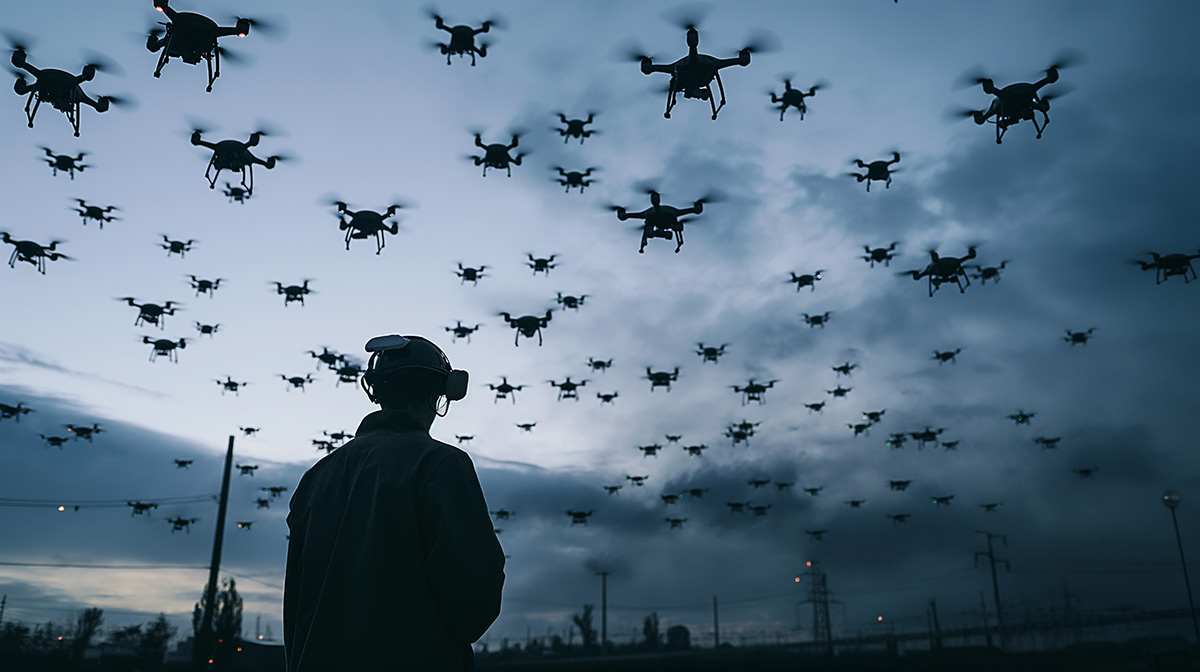
The Pentagon is turning its attention to countering small drones with the second iteration of its Replicator rapid-fielding initiative. Replicator 2, as it’s known, aims to quickly deliver new counter-uncrewed aerial systems (C-SUAS) capabilities to protect critical military assets and installations.
Defense Secretary Lloyd Austin announced the initiative in a memo to senior Pentagon leaders last week, following a review of capability gaps that could be addressed through the rapid fielding program. The memo, released publicly on Monday, highlighted the growing threat posed by enemy drones.
“Replicator 2 will tackle the warfighter priority of countering the threat posed by small uncrewed aerial systems to our most critical installations and force concentrations,” Austin stated. “My expectation is that Replicator 2 will field meaningfully improved C-sUAS protection to critical assets within 24 months of Congress approving funding.”
A Growing Threat
These incidents have disrupted global trade and resulted in the deaths of three merchant sailors. A June 13 report from the Defense Intelligence Agency found that 65 countries and 29 primary energy and shipping companies have been affected by these drone-related aggressions, forcing many to alter their routes.
A Layered Approach
To address this growing threat, the Pentagon is employing a layered approach, pursuing a range of capabilities to disable enemy drones, from electronic warfare to kinetic weapons. The military services are already working on several ongoing programs to develop these systems.
Replicator 2 will leverage these existing efforts, accelerating the fielding of counter-UAS capabilities in larger numbers. Led by the Defense Innovation Unit (DIU), the program will collaborate closely with the military services, the Counter Uncrewed Systems Warfighter Senior Integration Group, and Pentagon acquisition chief Bill LaPlante, who serves as the DOD’s C-sUAS principal staff assistant.
“I am confident the Replicator initiative will complement and advance the significant C-sUAS work already underway in the DOD,” Austin said. “The expectation is that Replicator 2 will assist with overcoming challenges we face in the areas of production capacity, technology innovation, authorities, policies, open system architecture and system integration, and force structure.”
Replicator 1: A Stepping Stone
Replicator 1, the first iteration of the initiative, is focused on delivering thousands of low-cost drones by next summer. The program has already awarded contracts for a diverse range of systems.
DIU director Doug Beck recently confirmed that the program has begun awarding contracts for Replicator 2, though details about specific companies and platforms remain undisclosed. Beck emphasized that the program has awarded contracts for 30 different hardware and software efforts, involving over 50 major subcontracts to a variety of companies.
A Digital Backbone
DIU is working with the Chief Digital and Artificial Intelligence Office (CDAO) to develop a digital backbone allowing all Replicator systems to work together seamlessly. CDAO is establishing an AI hub for Replicator, and its Alpha-1 capability set will provide tools to validate system performance.
While DIU has not disclosed the companies selected to support the digital elements of Replicator 2, Beck stated that the department is working with hundreds of companies vying for a role in this critical area.
Looking Ahead
Replicator 2 aims to address a crucial need within the Pentagon, providing a faster and more efficient means of fielding counter-UAS systems to combat the evolving threat posed by enemy drones. The program’s success relies on collaboration between the military services, DIU, and other stakeholders within the DOD. As the initiative moves forward, the Pentagon will continue to evaluate and refine its approach, seeking to strengthen its defenses against increasingly sophisticated drone threats.
